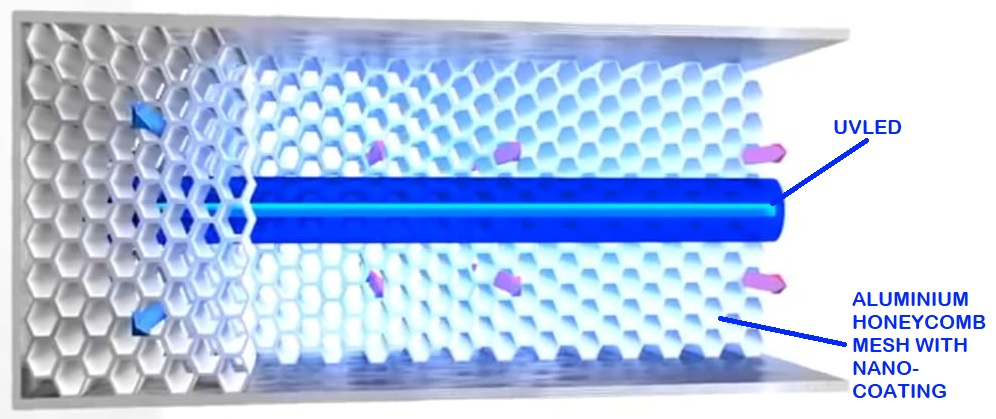When you see "photo" attached to a word (as in photocopier, photograph, photomultiplier, photoelectric...), you can be pretty sure light is involved: photos is the Greek word for "light." Photocatalysis means light is involved in making a catalyst do its job. In other words, light provides the energy that allows the catalyst to work.
Here’s how the titanium dioxide catalyst in an air purifier breaks apart molecules of air pollution:
- When UV light (the big yellow arrow shown here) shines on the titanium dioxide, electrons (the tiny, negatively charged particles inside atoms) are released at its surface. It’s the electrons that do the useful work for us.
- The electrons interact with water molecules (H2O) in the air, breaking them up into hydroxyl radicals (OH·), which are highly reactive, short-lived, uncharged forms of hydroxide ions (OH−).
- These small, agile hydroxyl radicals then attack bigger organic (carbon-based) pollutant molecules, breaking apart their chemical bonds and turning them into harmless substances such as carbon dioxide and water. This is an example of oxidation—and that’s why air purifiers that work this way are sometimes also described as PCO (photocatalytic oxidation) air cleaners.



ADVANCED NANO OXIDATION with Plasm-Ion is easily mounted into air conditioning and heating system air ducts where many problems can start. When the HVAC system is in operation, Advanced Nano Oxidation Process consisting of hydroperoxides, superoxide ions, and safe low-level ozone – all friendly oxidizers that revert back to oxygen and hydrogen after the oxidation of pollution.
It also comes with a Non-Thermal Plasm-Ion cluster of Nano Ions with dual polarity that produces Positive and Negative Ions in the environment.

